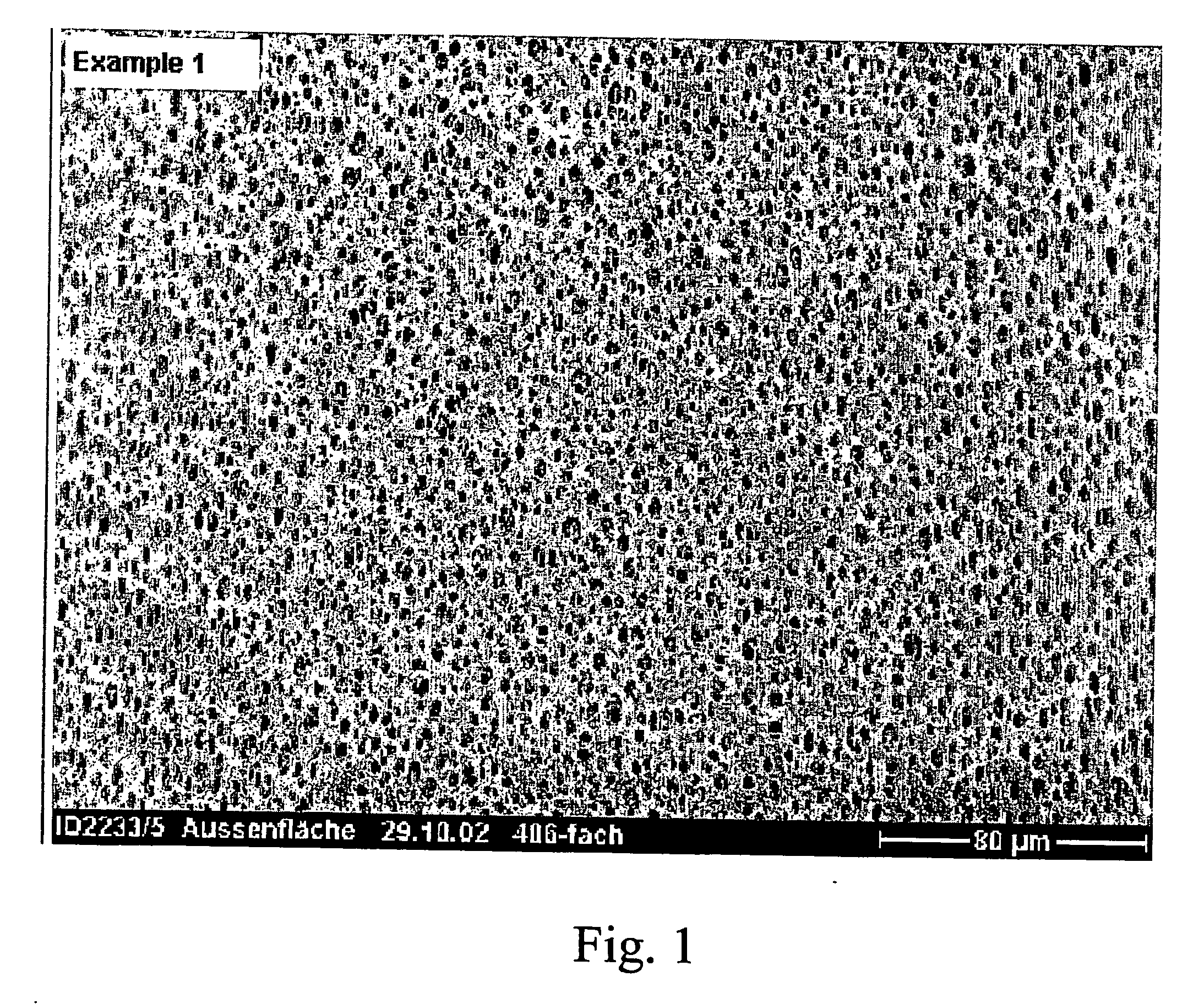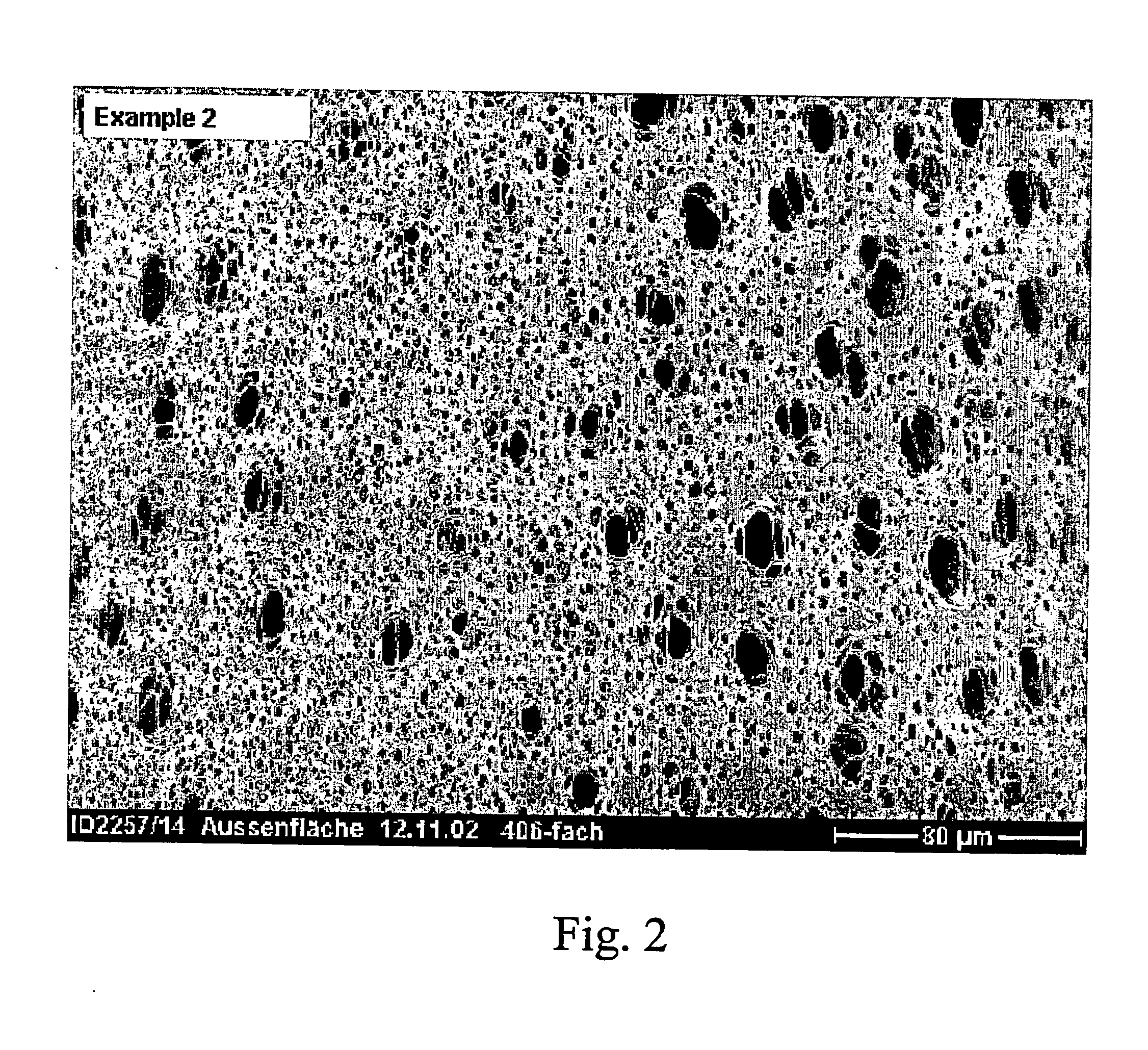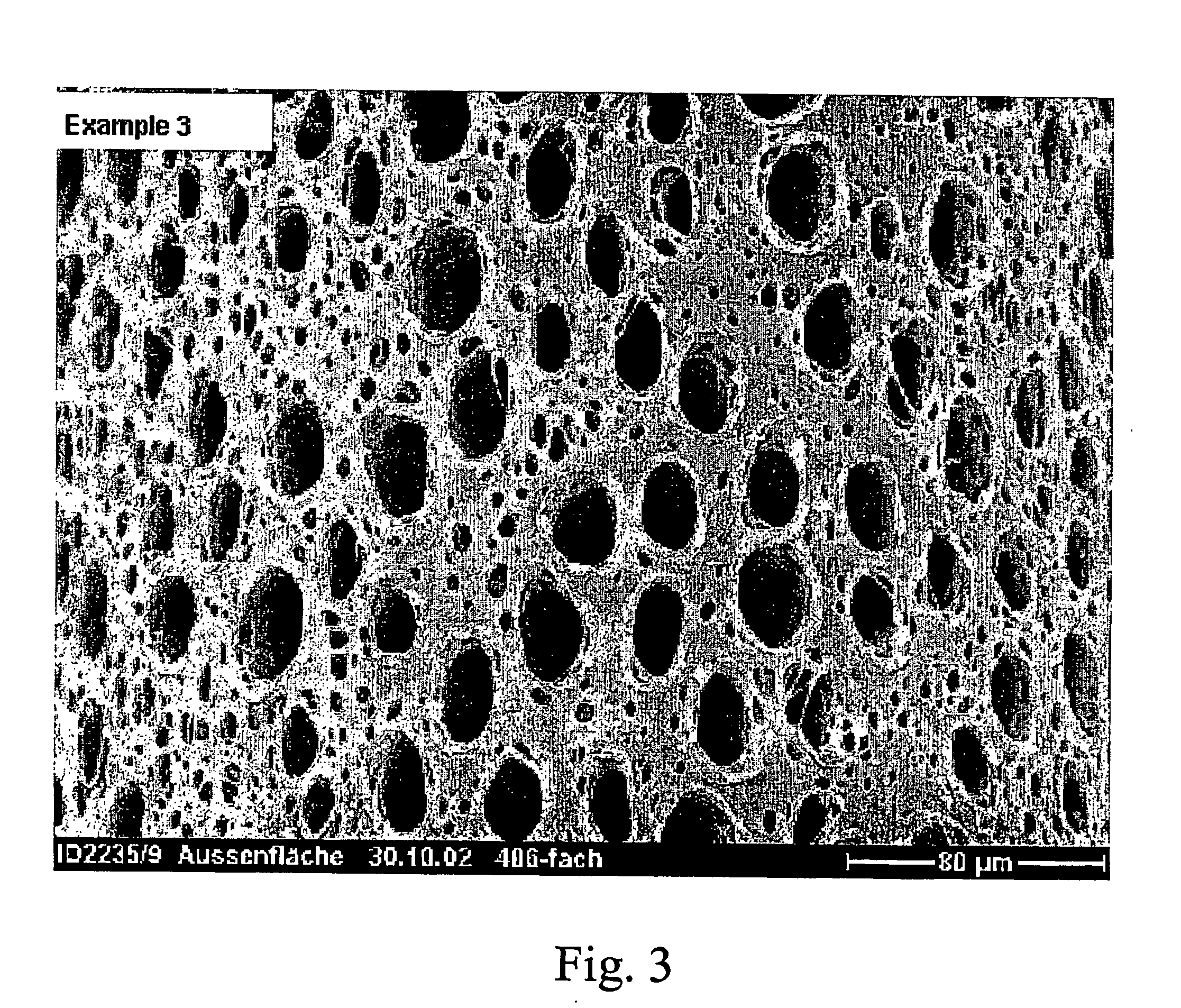Permselective membrane and process for manufacturing thereof
- Summary
- Abstract
- Description
- Claims
- Application Information
AI Technical Summary
Benefits of technology
Problems solved by technology
Method used
Image
Examples
example 1
[0043] A polymer solution is prepared by mixing 13.5% of polyarylethersulphone, 0.5% of polyamide, 7.5% of PVP K30 and 78.5% of NMP. A mixture of 59% water and 41% NMP serves as center fluid. The viscosity of the polymer solution, measured at a temperature of 22° C., is 4,230 mPas.
[0044] Center fluid is heated to 55° C. and pumped towards a two-component hollow fiber spinneret. The polymer solution is leaving the spinneret through an annular slit with an outer diameter of 0.5 mm and an inner diameter of 0.35 mm, The center fluid is leaving the spinneret in the center of the annular polymer solution tube in order to start the precipitation of the polymer solution from the inside and to determine the inner diameter of the hollow fiber.
[0045] At the same time the two components (polymer solution and center fluid) are entering a space separated from the room atmosphere. The space is called spinning shaft. A mixture of steam (100° C.) and air (22° C.) is injected into the spinning shaf...
example 2
[0047] Hollow fibers were manufactured according to example 1 with the exception that less steam was used in the spinning shaft. The temperature in the spinning shaft was adjusted by the ratio of steam and air at 37° C. and a relative humidity of 84%. The content of solvent. (NMP) was adjusted to 2.4% by weight related to the water content.
[0048] A scanning micrograph of the outer surface of the hollow fiber according to example 2 is shown in FIG. 2. The hollow fiber according to this example had 18,700 pores in the range of 0.5 to 3 μm per mm2.
PUM
| Property | Measurement | Unit |
|---|---|---|
| Temperature | aaaaa | aaaaa |
| Temperature | aaaaa | aaaaa |
| Temperature | aaaaa | aaaaa |
Abstract
Description
Claims
Application Information
 Login to View More
Login to View More - R&D
- Intellectual Property
- Life Sciences
- Materials
- Tech Scout
- Unparalleled Data Quality
- Higher Quality Content
- 60% Fewer Hallucinations
Browse by: Latest US Patents, China's latest patents, Technical Efficacy Thesaurus, Application Domain, Technology Topic, Popular Technical Reports.
© 2025 PatSnap. All rights reserved.Legal|Privacy policy|Modern Slavery Act Transparency Statement|Sitemap|About US| Contact US: help@patsnap.com



